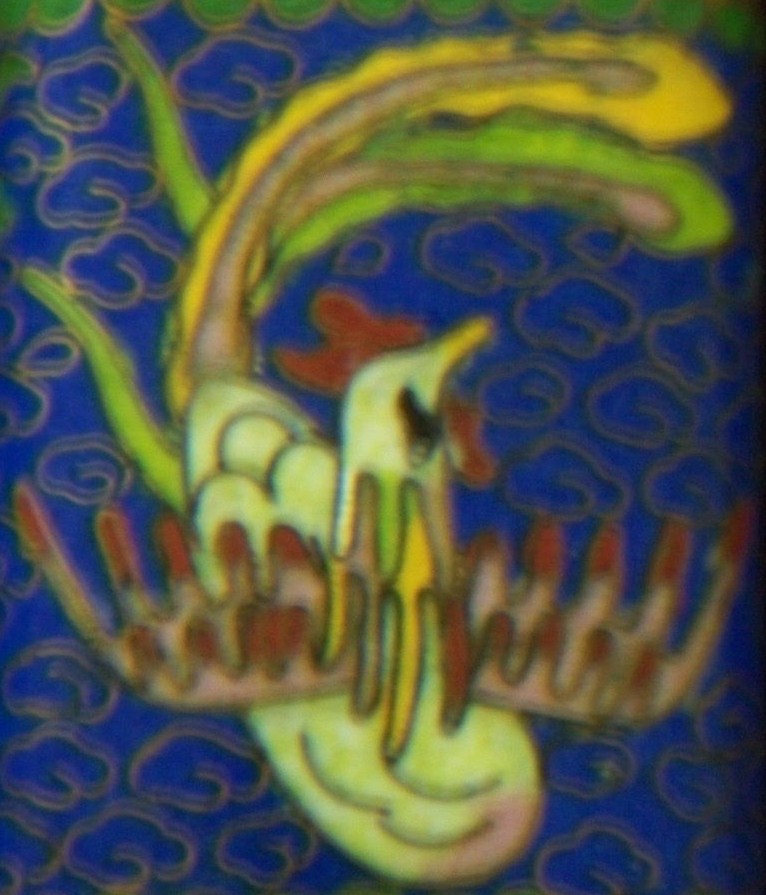The pendant turned out to be damaged, so I returned it for a refund. It was re-sold, and the buyer removed its original cord, re-strung it into an attractive bead necklace, and successfully sold it again. What caught my curiosity was that, in her online auction, she described the pendant to be from around 1910. Discussion at beadcollector.net had persuaded me that this sort of pendant was vintage 1970s. Which date was correct? What were the clues that might enable one to date such an object?
Subsequently I harvested a number of these large disk beads from the Internet, either as purchases or images:
 |
| Three pendants with JingFa clouds, a black pendant with older style "crinkle" clouds. Note the variance in workmanship - red upper left is the poorest. |
 |
| Dragons on reverse sides |
.jpg) |
| A Laurel Burch necklace from the late 1970s, according to its previous owner. A lovely, graceful bird. |
 |
| Older style "crinkle" clouds, artist definitely had trouble putting the bird together. |
Similar, but smaller and thinner, beads show up on belts that seem to date from the 1930s:
 |
| Now in a private collection, from Magic Dragon's Store. Note that some beads are actual hand-wired cloisonne, others are exact champleve duplicates of a different phoenix design. The cloisonne beads feature a rather simple version of the bird, and spiral "peaked" clouds. |
 |
| Champleve beads from another belt |
 |
| Note 10mm cloisonne clasp and older style of "peaked" spiral clouds |
 |
| Artistic skill and workmanship vary quite a bit. Heads... |
 |
| Bodies and wings... |
 |
| Tail feathers |
Comparing the little phoenixes on the beads to this vintage vase, the more skilled of the two bead artists has done a rather amazing job of cramming so much lively detail onto a small curved surface.
 |
| Stunning pair of phoenix and peony vases, courtesy of W J M Antiques, Suffolk, United Kingdom (click on the picture, these deserve a larger view) |
An oddity that turned up in my search is the way vendors described the creatures. Dragons they understood immediately, but the phoenix apparently is not as easily recognizable as a bird and so wound up being called "serpents," "sea anemones," or "a fish."
 |
| The "fish." Actually, I can understand this. |
 |
| Lady Amherst's Pheasant |
Wikipedia has more, of course, for those interested in the actual history of the iconography, including an explanation as to why male plumage wound up in a bird that is now connected with femininity.
Here's a more recent enameled phoenix, designed for some mysterious purpose - display object? container cover?
As to dating the beads, what do you think? 1910, or 1970s?






No comments:
Post a Comment